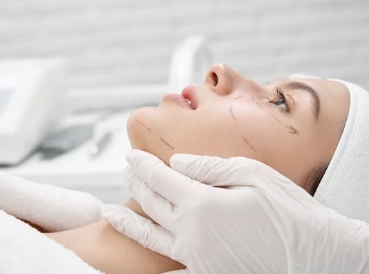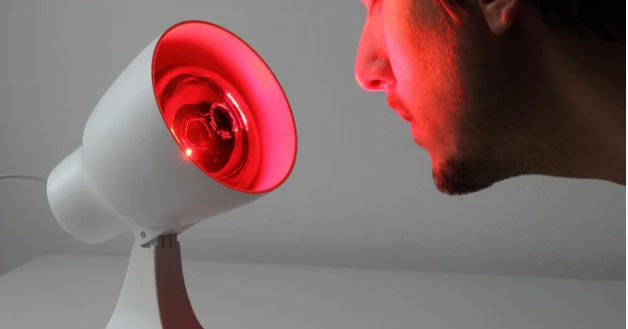Are you recovering from surgery and looking for ways to speed up the healing process? Red Light Therapy might be the solution you’re searching for.
After surgery, your body needs time to heal and regenerate. Did you know that red light therapy can potentially enhance your recovery? This non-invasive treatment uses specific wavelengths of light to stimulate cellular activity and promote healing.
By targeting the affected area, red light therapy can help reduce inflammation, relieve pain, and improve circulation, which is crucial for a successful recovery. Whether you’ve had a cosmetic procedure, joint surgery, or even major surgery, red light therapy may suit you.
In this article, we will explore the potential benefits of red light therapy after surgery and discuss its suitability for various surgical procedures. So, if you’re wondering if you can do red light therapy after surgery, keep reading to learn more.

The Importance of Post-Surgery Recovery
After surgery, it’s crucial to prioritize post-surgery recovery to ensure a smooth healing process. Red light therapy can be a beneficial addition to your recovery routine.
This non-invasive treatment uses low-level red light to penetrate your skin and stimulate healing at a cellular level. Red light therapy can promote tissue repair and reduce pain by increasing blood flow and reducing inflammation. It can also help with scar tissue formation, essential for proper healing after surgery.
However, it’s essential to consult with your healthcare provider before incorporating red light therapy into your recovery plan. They can assess your situation and guide you on when it’s safe and appropriate to start this treatment. Remember to follow their instructions and be patient with your recovery process.
How Red Light Therapy Works
Red light therapy works by interacting with your cells at a cellular level, stimulating various biological processes. It promotes healing by increasing blood flow, reducing inflammation, and boosting collagen production. Red light therapy can enhance your body’s natural healing abilities and accelerate the recovery process after surgery.
1. Interaction with Cells
During red light therapy, cells can interact and respond positively to the treatment. When red light is absorbed by the cells, it stimulates energy production through adenosine triphosphate (ATP).
This increase in ATP production helps to improve cellular function and promote healing. Red light therapy also triggers the release of nitric oxide, which helps to improve blood circulation and reduce inflammation.
As a result, damaged cells can repair and regenerate more efficiently. The interaction between red light and cells is a key factor in the effectiveness of this therapy. Red light therapy can support the healing process after surgery by providing the cells with the energy they need to function optimally.
2. Promoting Healing
Red light therapy promotes natural healing by stimulating cellular function and improving blood circulation. After surgery, this therapy can be a beneficial addition to your recovery routine.
The red light penetrates deep into the skin, reaching the cells and stimulating them to produce more energy. This energy helps produce collagen, essential for wound healing and tissue repair. Additionally, red light therapy increases blood flow to the treated area, delivering oxygen and nutrients crucial for healing. Promoting the formation of new blood vessels helps to rejuvenate damaged tissues.
Red light therapy is non-invasive and painless, making it a safe option to incorporate into your post-surgery care. However, it’s always essential to consult with your healthcare provider before starting any new treatment.
Red Light Therapy and Surgery: Can They Coexist?
After surgery, it’s essential to consider if red light therapy can be safely incorporated into the healing process. Red light therapy can actually help promote healing and reduce pain after surgery. The therapy works by stimulating collagen production, essential for wound healing. It also increases blood flow to the treated area, which can help deliver essential nutrients and oxygen to the cells that are repairing themselves.
However, it’s always essential to consult your doctor before starting new treatments after surgery. They can provide personalized advice based on your surgical procedure and recovery process. So, if you’re considering red light therapy after surgery, discuss it with your healthcare professional to ensure it’s a safe and beneficial option for you.

Potential Benefits of Red Light Therapy After Surgery
After surgery, red light therapy can offer potential benefits in pain management, reducing inflammation, and scar healing. You can use red light therapy to help alleviate post-operative pain by stimulating blood flow and promoting the release of endorphins.
Additionally, red light therapy can aid in reducing inflammation by increasing lymphatic drainage and decreasing pro-inflammatory cytokines.
Lastly, it can promote scar healing by stimulating collagen production and improving tissue regeneration.
1. Pain Management
Take advantage of red light therapy after surgery to help manage your pain and find relief. Red light therapy has been shown to be an effective tool in pain management. It helps to reduce inflammation and promote healing. By using red light therapy, you can target specific areas of pain and discomfort, providing targeted relief where you need it most.
The therapy works by stimulating the production of ATP, which is the energy source for our cells. This increased energy production helps to accelerate the healing process and reduce pain. Additionally, red light therapy has been found to increase blood circulation, which can further relieve pain.
So, if you’re looking for a natural and non-invasive way to manage your post-surgery pain, consider trying red light therapy.
2. Reducing Inflammation
For a more effective recovery, it’s essential to explore methods to reduce inflammation and promote healing.
After surgery, your body goes through a process of healing, which involves inflammation. Red light therapy can be a beneficial option to help reduce inflammation and speed up the healing process.
The therapy works by exposing your body to low red or near-infrared light levels, penetrating the skin, and stimulating cellular activity. This stimulation helps to increase blood flow and oxygen delivery to the affected area, promoting the removal of waste products and the delivery of nutrients necessary for healing.
Red light therapy can help alleviate pain and discomfort by reducing inflammation, allowing you to recover more quickly and effectively after surgery.
3. Scar Healing
It’s crucial to incorporate methods aiding scar healing to expedite the healing process and minimize scarring. After surgery, you may be wondering if red light therapy can be used to promote scar healing. The good news is that red light therapy has shown potential in improving scar healing outcomes.
This therapy involves exposing the affected area to low-level red light, stimulating collagen production, and increasing blood flow. These effects can help reduce scar tissue formation and improve the appearance of scars over time. However, it’s essential to consult with your healthcare provider before starting any new treatments post-surgery. They’ll be able to provide guidance and determine if red light therapy is appropriate for your specific case.
Discussing the Suitability of Red Light Therapy for Various Surgeries
If you’ve undergone orthopedic surgery, red light therapy may be suitable for you. It can help reduce inflammation and pain, promote tissue healing, and improve overall recovery.
Similarly, if you’ve had a cosmetic procedure, red light therapy may be beneficial for reducing swelling bruising, and promoting skin rejuvenation.
Additionally, red light therapy can aid wound healing by increasing blood circulation, stimulating collagen production, and reducing scar formation.
1. Orthopedic Surgeries
After orthopedic surgeries, you can incorporate red light therapy into your post-operative recovery routine. Red light therapy has shown promising results in aiding healing and reducing pain and inflammation associated with orthopedic surgeries.
The therapy delivers low-level red light to the affected area, stimulating cellular activity and promoting tissue regeneration. It can help accelerate the healing process and improve overall recovery outcomes. Additionally, red light therapy has been found to improve circulation, which can enhance the delivery of nutrients and oxygen to the surgical site, further supporting healing.
It’s important to consult with your healthcare provider before starting red light therapy, as they can guide the appropriate timing and duration of treatment for your specific surgery.
2. Cosmetic Procedures
Undergoing cosmetic procedures can leave you feeling rejuvenated and confident in your skin. If you’ve recently had cosmetic surgery, you may wonder if red light therapy is a suitable treatment option. The good news is that red light therapy can be a beneficial addition to your post-surgery recovery routine.
Red light therapy uses low-level wavelengths of red light to stimulate healing and rejuvenation in the skin. It can help reduce inflammation, promote collagen production, and improve skin tone and texture. However, it’s essential to consult your surgeon before starting red light therapy to ensure it’s safe and appropriate for your surgical procedure.
They’ll be able to provide you with personalized advice and guidelines to optimize your recovery process.
3. Wound Healing
During the recovery process, it’s crucial to prioritize wound healing to ensure optimal results. After surgery, your body goes through a natural healing process where new tissue forms to repair the wound.
Red light therapy can be a beneficial treatment option to aid in this process. It exposes the wound to low-level red light, stimulating cellular activity and promoting faster healing. The red light penetrates deep into the skin, increasing blood circulation and reducing inflammation.
This therapy has been shown to enhance collagen production, essential for wound healing. However, it’s important to consult your healthcare provider before starting red light therapy to ensure it’s safe and appropriate for your situation. They can guide the therapy on the best timing and duration to maximize its effectiveness in your post-surgical recovery.
Conclusion
In conclusion, consider incorporating red light therapy into your recovery routine if you’ve recently undergone surgery. This non-invasive treatment has shown potential benefits in reducing pain inflammation and promoting wound healing. However, it’s essential to consult with your healthcare provider to ensure its suitability for your specific surgery and to determine the appropriate timing and duration of the therapy. By integrating red light therapy into your post-surgery recovery plan, you may experience enhanced healing and a faster return to your normal activities.
